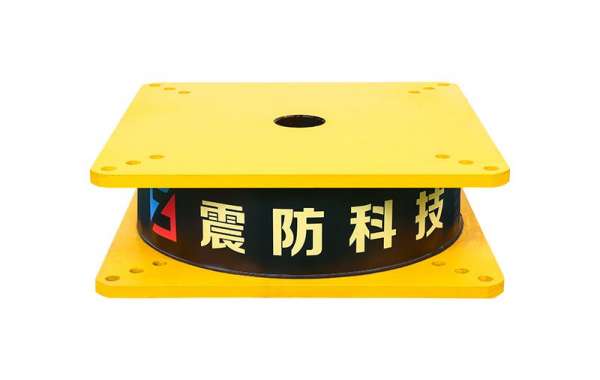The field of structural engineering continuously seeks solutions to mitigate the impact of seismic events on buildings and bridges, and a pivotal innovation in this area is the Natural Rubber Isolation Bearing. This device is a type of base isolator, strategically installed between a structure's foundation and its superstructure to decouple the building from ground motions. The core component of this system is a laminated bearing made from layers of natural rubber and steel plates. The natural rubber provides flexible, horizontal movement, while the steel plates reinforce the bearing, giving it vertical stiffness to support the structure's weight. The primary function of the Natural Rubber Isolation Bearing is to absorb and dissipate seismic energy, thereby reducing the forces transferred to the structure above. This approach to seismic isolation has proven to be a reliable method for protecting infrastructure and human life.
The engineering design of a Natural Rubber Isolation Bearing is a sophisticated application of material science. The high-damping natural rubber used in these isolation devices is valued for its ability to undergo large, reversible deformations without permanent damage. The manufacturing process involves vulcanizing alternating layers of this rubber and thin steel plates under heat and pressure, creating a single, cohesive unit. The steel plates within the bearing serve two purposes: they confine the rubber layers, forcing the bearing to bulge under lateral load and thus providing its characteristic flexibility, and they give the isolation bearing the necessary compressive strength. The size and number of these layers are carefully calculated to achieve specific performance targets for horizontal stiffness and damping, customizing the Natural Rubber Isolation Bearing for the unique requirements of each project.
The application and benefits of Natural Rubber Isolation Bearing technology are substantial for structural resilience. When an earthquake occurs, the ground moves rapidly, but a structure mounted on these isolation bearings moves more slowly and uniformly. The Natural Rubber Isolation Bearing allows the foundation to shift without forcing the entire building to follow that motion immediately. This isolation effect can significantly reduce inter-story drift and floor accelerations, which are primary causes of structural and non-structural damage during seismic events. Consequently, a building equipped with a Natural Rubber Isolation Bearing system is likely to experience less damage, remain functional after a quake, and provide a much safer environment for occupants. This makes the technology particularly important for critical facilities like hospitals, emergency response centers, and schools.
The Natural Rubber Isolation Bearing represents a fundamental advancement in seismic protection strategies. Its unique laminated construction, harnessing the elastic properties of natural rubber and the strength of steel, provides an effective means of isolation from destructive ground forces. The widespread adoption of this bearing system in seismically active regions around the world underscores its effectiveness and reliability. As engineering standards evolve and the demand for resilient infrastructure grows, the role of the Natural Rubber Isolation Bearing in safeguarding our built environment remains critically important. This isolation technology continues to be a cornerstone of modern earthquake engineering.







